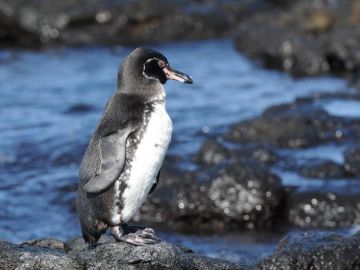
Birdwatching Guide for Galapagos Island Cruises
The Galapagos Islands have their fair share of mammals, reptiles, and amphibians, from Sea Lions and Sea Turtles to Galapagos Tortoises and Land Iguanas.
But it also features 56 native bird species – 45 of which are endemic and 11 of which are indigenous – as well as 29 migratory species. These sea birds, shorebirds and land birds have been a highlight ever since the days of Charles Darwin’s famous Voyage of the Beagle.
Boobies
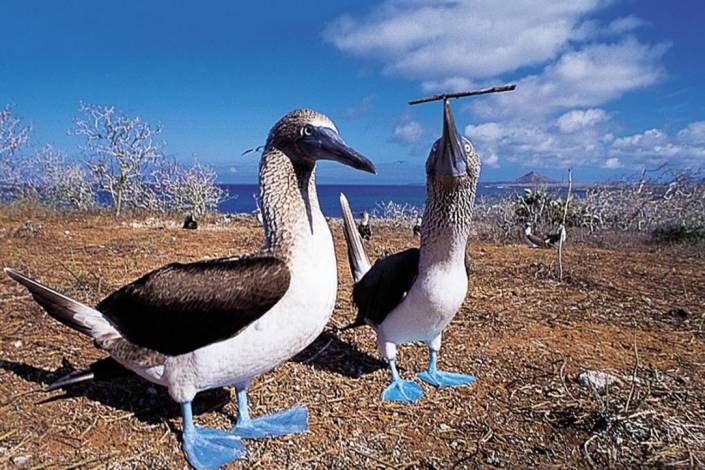
The three booby species rank among the most popular birds of the Galapagos. Red-footed boobies are the smallest and most abundant, nesting in huge colonies in trees and shrubs of the outer-most islands, as they feed far out to sea. Blue-footed boobies feed close to shore, making spectacular dives into the sea to feed, and are widely distributed in small ground-nesting colonies.
Nazca Boobies, formerly known as Masked Boobies due to their distinctive facial markings, are known for siblicide – they lay two eggs, but the oldest chick typically kills the youngest.
Darwin’s Finches
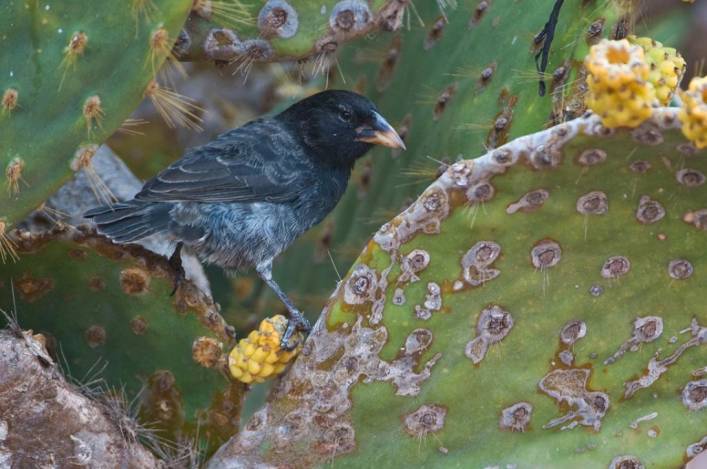
Also known as Galápagos Finches, these 14 species belong to the tanager family and are not closely related to true finches. They played a crucial role in Darwin’s theory of natural selection, as each species has a distinctive beak size and shape and specialized feeding behavior. Collective, these species fill the roles of seven different families of birds found on mainland South America.
Flightless Cormorant
One of the world’s rarest bird species, with less than 1000 left. They have black and brown feathers, brilliant turquoise eyes, low growling voices, and wings 1/3 the size that would be required to fly. Their feathers aren’t waterproof, so they spend a lot of time drying their short, stubby appendages in the sunlight. They’re found only on the islands of Fernandina and Isabela, where you frequently see them diving down deep into the ocean in search of fish, eels and other small prey.
Magnificent Frigatebird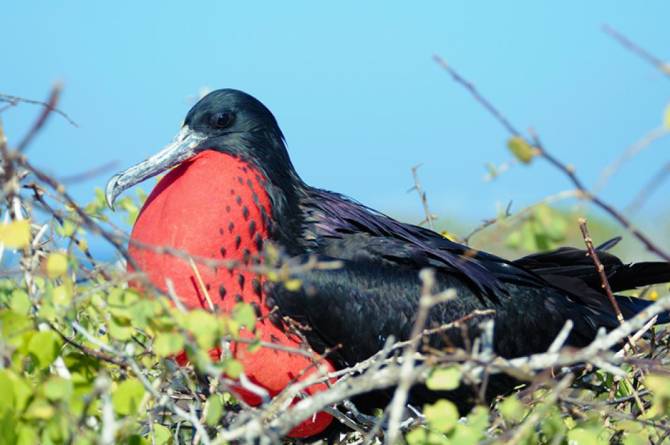
The Magnificent Frigate is not endemic to the Galapagos, but it is one of its most impressive inhabitants. With bodies up to 45 inches long and a massive wingspan, they soar (often in the updraft created by ships) aloft, never touching water, feeding by either snatching fish from the ocean’s surface or forcing other birds to regurgitate their meal so they can steal it. During mating season, males inflate their red throat pouches dramatically to attract females, making for fantastic photos.
Galapagos Dove
Endemic to the Galapagos, this dove boasts a large population and a small range, making them one of the islands’ most common species. Their plumage includes varying shades of brown, red, grey and white, with pink feet and bright blue rings around the eyes. They inhabit dry, rocky lowlands, where they feed on seeds, caterpillars and cacti blossoms.
Galapagos Hawk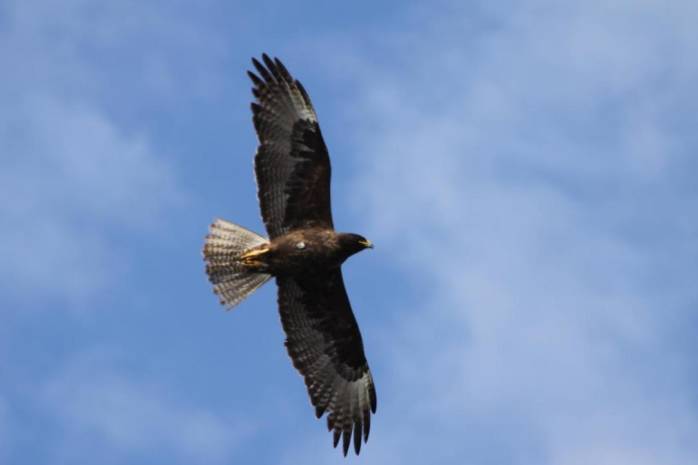
With few natural predators in the Galapagos, these raptors play a vital role in the local ecosystem. Similar in size to a red-tailed hawk, they use their sharp beaks and claws to prey on lizards, snakes, rodents, marine iguanas and the occasional turtle hatchling. They also feast on carrion, even that which is too rancid for other animals to eat.
Galapagos Mockingbird
With six endemic subspecies spread across the archipelago, this long-tailed, long-legged, long-beaked bird is the most widespread of the mockingbird species found in the Galápagos. The omnivore eats almost everything– seeds, eggs, fruit and more– and studies show that they distribute viable seeds across the islands after digesting them.
Galapagos Penguin
Found mainly on Fernandina and Isabela, where there are fewer than 1,000 breeding pairs left, this equatorial Penguin measures around 19 inches long and weighs just five pounds. They’ve genetically adapted to the heat (which ranges from 59º-82ºF), thermoregulating by stretching out their flippers, avoiding the sun, panting and swimming in the islands’ cooler waters.
Galapagos Petrel
Breeding in the humid highlands on large islands (Floreana, Isabela, San Cristobal, Santa Cruz and Santiago), these large seabirds nest in burrows and natural cavities on hillsides. Unfortunately, this made them vulnerable to invasive species such as cats, pigs and especially rats, which feed on their eggs and hatchlings. Although the population is recovering (estimated between 10,000-20,000 individuals), the species remains listed as Critically Endangered due to impacts from agriculture, invasive plants and El Niño events.
Galapagos Flamingo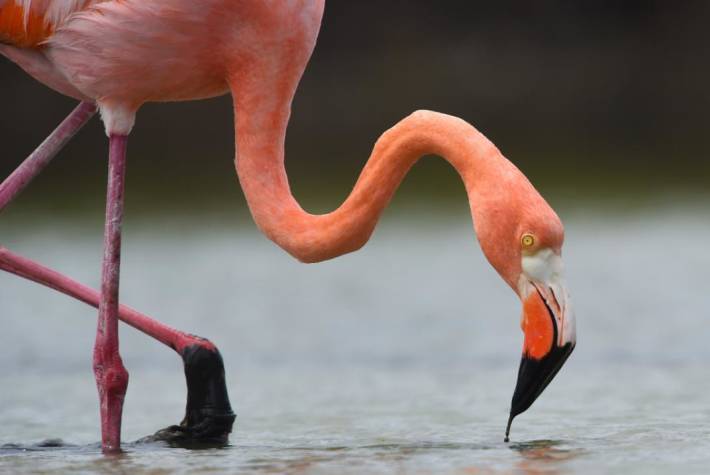
With less than 350 individuals, the Galapagos Flamingo is the world’s smallest and is listed as Endangered by the IUCN. They can be found is saltwater lagoons near the sea, feeding on the brine shrimp whose aqueous bacteria and beta carotene give them their pink color. Where populations elsewhere require large groups for successful breeding, Galápagos Flamingos can breed with just a few pairs present, producing chicks with grey plumage.
Galapagos Flycatcher
Also known as the Large-Billed Flycatcher, this endemic species is found on all of the islands, primarily in tropical dry forests and tropical arid shrubland. The smallest member of its genus, with an average length of 5.9-6.3 inches, long legs, and bright yellow bellies on the male of the species. They’re also very curious, and are known for being attracted to tourists with large camera lenses.
Lava Gull
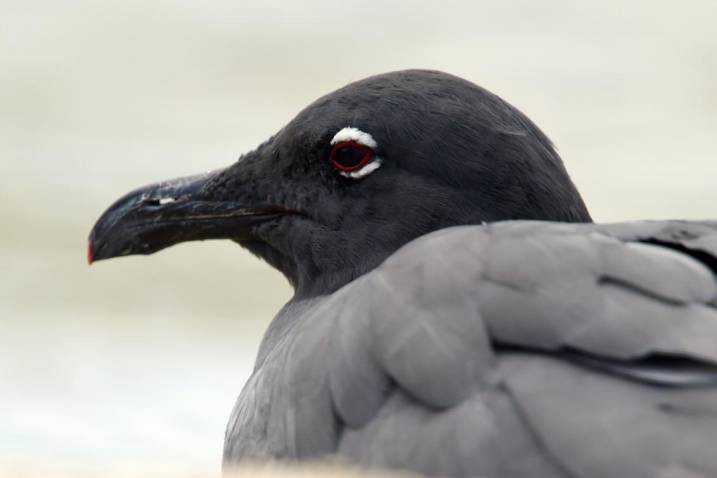
Endemic to the Galapagos, this is the rarest gull species in the world, with a population of 900-1,200 leading to their IUCN listing as Vulnerable. Adult plumage is mostly grey with black and white accents, which are believed to help with camouflage. Typically seen in single pairs rather than colonies, nesting on sandy beaches and low outcroppings, these scavengers feed on seabird eggs, juvenile marine iguanas and turtles, fish and small crustaceans.
Swallow-Tailed Gull
Another endemic species, which also happens to be the only fully nocturnal seabird in the world, feeding primarily on squid and fish. Mating pairs– which nest on steep slopes, ledges, and just above the wave line on gravelly beaches– frequently stay together, breeding year after year. Their red-ringed eyes are a striking defining feature.
Waved Albatross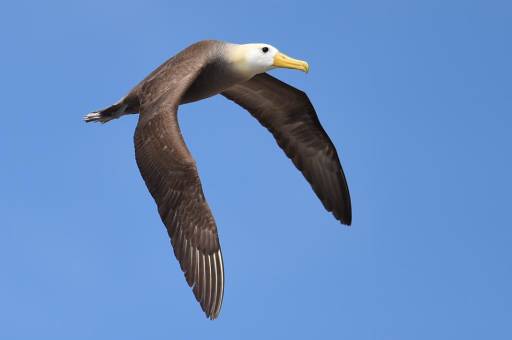
Classified as Critically Endangered due to their small breeding range, the Waved Albatross is only found on Española Island. Pairs mate for life, typically arriving in late March and doing an elaborate mating dance to ensure they have the right partner. They lay eggs from mid-April to late June, with chicks fledging at the end of the year. During non-breeding season, they move to the waters off the coast of Ecuador and Peru.